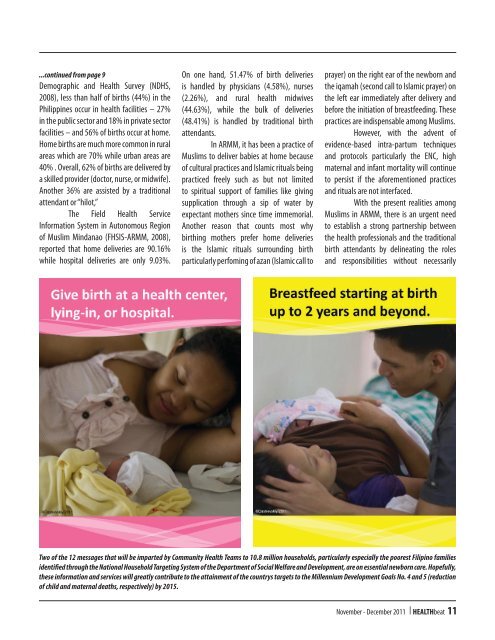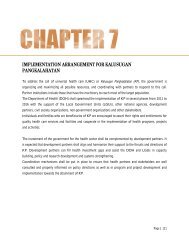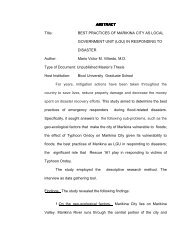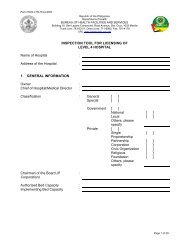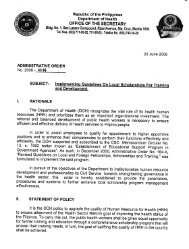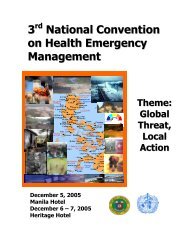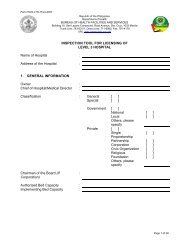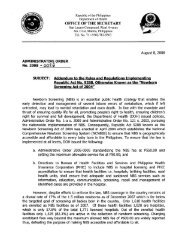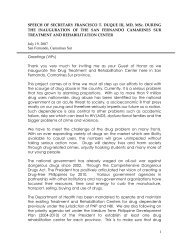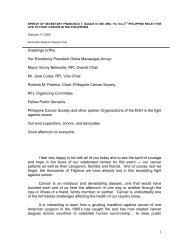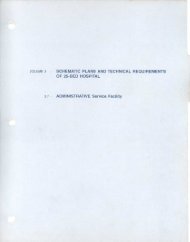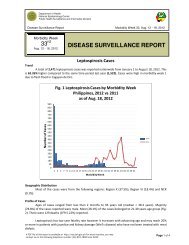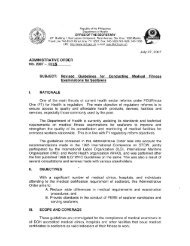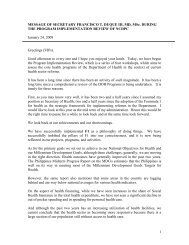Issue No. 67 - November to December 2011 - DOH
Issue No. 67 - November to December 2011 - DOH
Issue No. 67 - November to December 2011 - DOH
- No tags were found...
You also want an ePaper? Increase the reach of your titles
YUMPU automatically turns print PDFs into web optimized ePapers that Google loves.
...continued from page 9Demographic and Health Survey (NDHS,2008), less than half of births (44%) in thePhilippines occur in health facilities – 27%in the public sec<strong>to</strong>r and 18% in private sec<strong>to</strong>rfacilities – and 56% of births occur at home.Home births are much more common in ruralareas which are 70% while urban areas are40% . Overall, 62% of births are delivered bya skilled provider (doc<strong>to</strong>r, nurse, or midwife).Another 36% are assisted by a traditionalattendant or “hilot,”The Field Health ServiceInformation System in Au<strong>to</strong>nomous Regionof Muslim Mindanao (FHSIS-ARMM, 2008),reported that home deliveries are 90.16%while hospital deliveries are only 9.03%.On one hand, 51.47% of birth deliveriesis handled by physicians (4.58%), nurses(2.26%), and rural health midwives(44.63%), while the bulk of deliveries(48.41%) is handled by traditional birthattendants.In ARMM, it has been a practice ofMuslims <strong>to</strong> deliver babies at home becauseof cultural practices and Islamic rituals beingpracticed freely such as but not limited<strong>to</strong> spiritual support of families like givingsupplication through a sip of water byexpectant mothers since time immemorial.Another reason that counts most whybirthing mothers prefer home deliveriesis the Islamic rituals surrounding birthparticularly perfoming of azan (Islamic call <strong>to</strong>prayer) on the right ear of the newborn andthe iqamah (second call <strong>to</strong> Islamic prayer) onthe left ear immediately after delivery andbefore the initiation of breastfeeding. Thesepractices are indispensable among Muslims.However, with the advent ofevidence-based intra-partum techniquesand pro<strong>to</strong>cols particularly the ENC, highmaternal and infant mortality will continue<strong>to</strong> persist if the aforementioned practicesand rituals are not interfaced.With the present realities amongMuslims in ARMM, there is an urgent need<strong>to</strong> establish a strong partnership betweenthe health professionals and the traditionalbirth attendants by delineating the rolesand responsibilities without necessarilyTwo of the 12 messages that will be imparted by Community Health Teams <strong>to</strong> 10.8 million households, particularly especially the poorest Filipino familiesidentified through the National Household Targeting System of the Department of Social Welfare and Development, are on essential newborn care. Hopefully,these information and services will greatly contribute <strong>to</strong> the attainment of the countrys targets <strong>to</strong> the Millennium Development Goals <strong>No</strong>. 4 and 5 (reductionof child and maternal deaths, respectively) by 2015.<strong>No</strong>vember - <strong>December</strong> <strong>2011</strong> I HEALTHbeat 11


